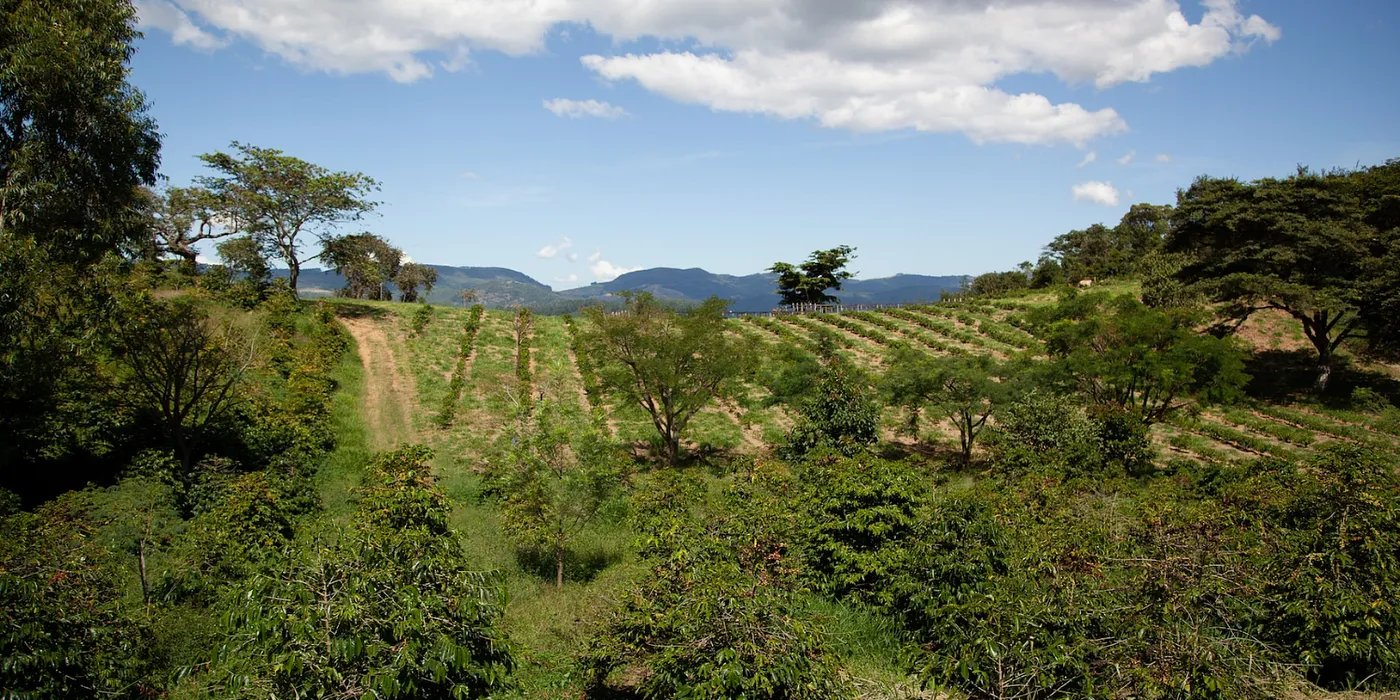As we envision a future where farms and forests store more carbon than they emit, we can turn to the oldest ways of knowing and growing, which harmonize agricultural production systems with natural processes. This includes co-managing trees, shrubs, and low-lying crops symbiotically — a suite of practices known as agroforestry. Agroforestry practices not only sequester carbon, but improve environmental health, protect wildlife, and boost producer income.

Agroforestry has been practiced by tribal and Indigenous communities for millennia, but European colonizers didn’t recognize this as advanced agriculture. Hundreds of years later, it’s gaining renewed attention across agricultural communities as a critical piece of the land-based carbon removal puzzle, and USDA is taking note.
Last year, USDA awarded The Nature Conservancy, The Savanna Institute, and other partners a $64 million grant to develop markets for tree products across 37 states and spur agroforestry adoption (and it wasn’t the only agroforestry grantee!). We can build on this growing momentum to expand agroforestry implementation across the country, through key adjustments in the upcoming 2023 Farm Bill.
But first: why agroforestry works
Agroforestry involves cultivating diversified agroecosystems, blurring the line between conventional agriculture and tree cultivation. When trees, shrubs, and smaller crops are planted together, they mimic a natural ecosystem where various plants perform unique ecological functions to create resiliency and abundance of life.
Underground, trees build deep root systems and microbial communities year after year, sequestering carbon undisturbed and building healthy soils without annual replanting. Cultivating such perennials (trees and shrubs) instead of annuals (most conventional row crops) can improve soil health and shows promise for sequestering more carbon at scale — all modeled after how wild soils are made resilient by the many plants, insects, and microbes interacting in natural ecosystems.
Agroforestry is also good for farmers and ranchers’ bottom lines: Tending high-value tree crops like fruit and nuts alongside corn, wheat, and livestock diversifies revenue streams and increases both economic and climate resilience.
Depending on a farm or ranch’s needs and regional context, agroforestry can take many forms. For example, in the Southwest, native oak, pinyon, and elderberry trees typically grow quite tall, providing shade for plants like prickly pear, sumac, and wild currant that grow closer to the ground, keeping the soil covered and protecting active microbial communities. In the Corn Belt, riparian buffers planted alongside waterways reduce nutrient loss from fields, improving the water quality of lakes, rivers, and estuaries.
The state of agroforestry today
Agroforestry has been championed by USDA’s National Agroforestry Center (NAC) since 1990. It’s the only government agency dedicated to advancing agroforestry through on-the-ground research, technical assistance, and demonstration projects spanning US regions and operation types. Beyond that, USDA has slowly increased agency support for agroforestry, ramping up staff capacity, and creating resources dedicated to agroforestry — steps we’ve directly advocated for.
In reality, barriers remain for producers to benefit from existing programming and incentives. Less than 2% of US agricultural acres employ agroforestry, often due to time and financial constraints. Implementing new agroforestry practices requires producers to shoulder high upfront costs and wait three to eight years for trees to mature and become harvestable for profit.
With Congress’s help, we can begin to break down these barriers within and outside of USDA, incentivize agroforestry in a big way, and enable sequestering 2.2–6.4 billion metric tons of CO₂ per year on top of myriad benefits to soil and air, water, and wildlife.
Championing agroforestry in the 2023 Farm Bill
USDA’s Agroforestry Strategic Framework identifies ways to further integrate agroforestry across programs through 2024, including through key Farm Bill programs. A handful of conservation programs under the 2018 Farm Bill support producers in adopting certain agroforestry practices, including the Conservation Reserve Program (CRP).
As it stands, CRP doesn’t allow producers to harvest trees or graze livestock on enrolled land with agroforestry practices, hindering the adoption of these practices. The program prevents farmers from reaping the economic benefits of the tree and shrub crops they’ve planted, actively disincentivizing agroforestry adoption and re-enrollment in the program.
Additionally, CRP doesn’t support the full suite of agroforestry practices that can transform agricultural land at scale, particularly on marginal lands. A few targeted adjustments to the CRP program can make a marked difference for longer-term agroforestry while allowing producers to benefit economically from practice implementation.
It wouldn’t be the first time CRP has supported the long-term conservation of productive lands: The CRP Grasslands Initiative provides a strong case study for an Agroforestry Initiative under CRP. CRP Grasslands has set a precedent for supporting grasslands as both working lands for haying and grazing and invaluable ecosystems that store carbon, steward wildlife habitat, and provide myriad other conservation benefits. This year, the initiative enrolled over 3.1 million acres of US grasslands in a record-breaking signup since its creation in the 2014 Farm Bill. The success of CRP Grasslands demonstrates that conservation, climate, and economic benefits can coexist and be mutually beneficial.
Inspired by CRP Grasslands, we’re advocating for a new CRP Agroforestry Initiative to incentivize enrollment of up to 1 million acres of marginal lands devoted to agroforestry. Under this initiative, all agroforestry practices including silvopasture and alley cropping would be eligible for implementation as long as they are ecologically appropriate.
Furthermore, grazing and harvesting of trees and shrub crops, like fruit and nuts would be allowed as long as conservation outcomes are not hindered, while harvesting of woody biomass would be prohibited to protect the long-term growth of trees and shrubs and their carbon storage. And producers would be able to receive increased cost-share for agroforestry practice implementation to help hedge those high upfront establishment costs.
We’re optimistic that the 2023 Farm Bill can create the CRP Agroforestry Initiative and enable producers to adopt — and benefit from — these tried and true practices, building on the generations of leadership by traditional Indigenous champions of agroforestry.
Edited by Ana Little-Saña. Image by Pedro Lotti C. Dias.

